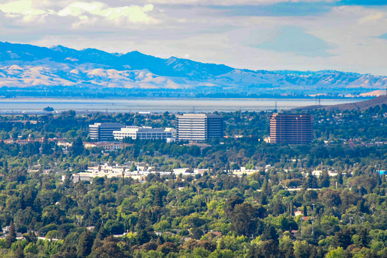By: Attorney Geoffrey J. Lamoureux
 The L-1A new office visa allows foreign companies to send a beneficiary to the United States to establish a new office and commence business. The new office must be related to the foreign company as its parent, subsidiary, branch, or affiliate. This relationship is called the qualifying relationship.
The L-1A new office visa allows foreign companies to send a beneficiary to the United States to establish a new office and commence business. The new office must be related to the foreign company as its parent, subsidiary, branch, or affiliate. This relationship is called the qualifying relationship.
A typical example of this qualifying relationship is a foreign company that sends a beneficiary to set up a subsidiary company in the United States. In that case, the new office would issue a majority of its shares to the foreign parent company, thereby creating the parent-subsidiary relationship.
A new office is defined as an organization that has been doing business in the United States for less than one year. Therefore, timely applying for the visa after the new office’s operations have begun is crucial and requires careful planning and professional advice.
The new office visa application does not require proof of extensive business activity. However, because the new office must actually be “doing” business, the mere presence of an agent or an office mailing address is insufficient. Instead, the applicant must submit evidence that sufficient physical space has been secured to house the new office. The required size of the physical space will vary according to business needs and the type of industry of the business, and a lease agreement with specifications will ordinarily satisfy this requirement.
The applicant must also show that the new office will support a managerial or executive position within one year. The manager or executive must have authority over the new operation. Although the manager or executive will initially be involved in running some day-to-day operations of the new office, it is expected that he or she will hire staff to take over running the day-to-day operations once the business is established.
The L-1A new office visa applicant must describe the proposed nature of the new office, its organizational structure, and its financial goals. It must also describe the size of the new office investment, demonstrate the financial ability of the foreign company to compensate the beneficiary and begin business, and explain the organizational structure of the foreign company. The visa application must also include a professionally-prepared business plan projecting staff levels by the end of the first year.
As mentioned, the L-1A visa applicant must be coming to the United States to perform managerial or executive duties. In exercising these duties, he or she must have wide latitude in making decisions about the management and goals of the organization.
Managerial duties are those in which an employee manages the company, supervises and controls the work of others, has the authority to hire and fire, and exercises discretion over the day-to-day operations of the company.
Executive duties are those in which an employee directs the management of the company, establishes the goals and policies of the organization, exercises wide-latitude in discretionary decision-making, and receives only general supervision from higher-level executives.
The beneficiary must have one continuous year of employment abroad as a manager or executive during the three-year period before the application is filed. They are also allowed to be accompanied by his or her spouse and unmarried children under 21 years of age.
The L-1A new office visa is initially approved for one year. To extend the visa, the applicant must produce substantial evidence demonstrating that the new office has become an established business. The evidence should show that the foreign and United States companies maintain a qualifying relationship, and that the new office continues to do business. It should also show the duties performed by the beneficiary in the previous year and the duties to be performed under the extended petition, staffing of the new operation and payroll records, and the new office’s financial status. Other factors considered in extending the visa for the new office include the number of employees, significant growth in cash flow, and the presence of significant customers and clientele.
There are unfortunately many fatal mistakes that people make when applying for an L-1A new office visa. These mistakes include the failure to timely file the visa application within one year of commencing business in the United States, submitting a business plan that lacks required details or specifications, or submitting a poorly structured visa application. Fortunately, all of these mistakes are avoidable. Be sure to consult with an experienced and knowledgeable immigration attorney so that you can achieve success with your L-1A new office visa application.




